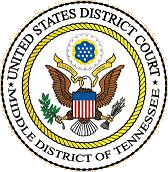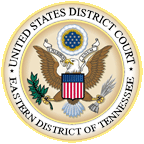
The United States courts of appeals are the intermediate appellate courts of the United States federal judiciary. They hear appeals of cases from the United States district courts and some U.S. administrative agencies, and their decisions can be appealed to the Supreme Court of the United States. The courts of appeals are divided into 13 "Circuits". Eleven of the circuits are numbered "First" through "Eleventh" and cover geographic areas of the United States and hear appeals from the U.S. district courts within their borders. The District of Columbia Circuit covers only Washington, DC. The Federal Circuit hears appeals from federal courts across the entire United States in cases involving certain specialized areas of law.

The United States district courts are the trial courts of the U.S. federal judiciary. There is one district court for each federal judicial district. Each district covers one U.S. state or a portion of a state. There is at least one federal courthouse in each district, and many districts have more than one. District court decisions are appealed to the U.S. court of appeals for the circuit in which they reside, except for certain specialized cases that are appealed to the U.S. Court of Appeals for the Federal Circuit or directly to the U.S. Supreme Court.

The Judiciary Act of 1789 was a United States federal statute enacted on September 24, 1789, during the first session of the First United States Congress. It established the federal judiciary of the United States. Article III, Section 1 of the Constitution prescribed that the "judicial power of the United States, shall be vested in one Supreme Court, and such inferior Courts" as Congress saw fit to establish. It made no provision for the composition or procedures of any of the courts, leaving this to Congress to decide.

The United States District Court for the Western District of Tennessee is the federal district court covering the western part of the state of Tennessee. Appeals from the Western District of Tennessee are taken to the United States Court of Appeals for the Sixth Circuit.
The Midnight Judges Act expanded the federal judiciary of the United States. The act was supported by the John Adams administration and the Federalist Party. Passage of the act has been described as "the last major policy achievement of the Federalists."
In the United States, circuit riding was the practice of a judge, sometimes referred to as a circuit rider, traveling to a judicial district to preside over court cases there. A defining feature of American federal courts for over a century after the founding of the United States, circuit riding has since been mostly abolished. The term, however, lives on in the name "circuit court", a colloquialism commonly used to refer to the United States courts of appeals.
The appointment of federal judges for United States federal courts is done via nomination by the President of the United States and confirmation by the United States Senate. The tables below provide the composition of all Article III courts which include the Supreme Court and the Courts of Appeals at the end of each four year presidential term, as well as the current compositions of the District Courts and the Court of International Trade, categorizing the judges by the presidential term during which they were first appointed to their seats.
The Judiciary Act of 1869, formally An Act to amend the Judicial System of the United States and is sometimes called the Circuit Judges Act of 1869. It provided that the Supreme Court of the United States would consist of the chief justice of the United States and eight associate justices. It established separate judgeships for the U.S. circuit courts, and for the first time included a provision allowing federal judges to retire without losing their salary. This is the most recent legislation altering the size of the Supreme Court. The Act was signed by President Ulysses S. Grant.
The Judiciary Act of 1891, also known as the Circuit Court of Appeals Act of 1891, or the Evarts Act after its primary sponsor, Senator William M. Evarts, created the United States courts of appeals and reassigned the jurisdiction of most routine appeals from the district and circuit courts to these appellate courts. Therefore, it is also called the Circuit Courts of Appeals Act.
The Judiciary Act of 1802 was a Federal statute, enacted on April 29, 1802, to reorganize the federal court system. It restored some elements of the Judiciary Act of 1801, which had been adopted by the Federalist majority in the previous Congress but then repealed by the Democratic-Republican majority earlier in 1802.
Stuart v. Laird, 5 U.S. 299 (1803), was a case decided by United States Supreme Court notably a week after its famous decision in Marbury v. Madison.

The United States District Court for the Middle District of Tennessee is the federal trial court for most of Middle Tennessee. Based at the Estes Kefauver Federal Building and United States Courthouse in Nashville, it was created in 1839 when Congress added a third district to the state. Tennessee—along with Kentucky, Ohio, and Michigan—is located within the area covered by United States Court of Appeals for the Sixth Circuit, and appeals are taken to that court.

The United States District Court for the Eastern District of Tennessee is the federal court in the Sixth Circuit whose jurisdiction covers most of East Tennessee and a portion of Middle Tennessee. The court has jurisdiction over 41 counties, which are divided among four divisions. Based in Knoxville, Tennessee, it maintains branch facilities in Chattanooga, Tennessee; Greeneville, Tennessee; and Winchester, Tennessee.
The Government of Guam (GovGuam) is a presidential representative democratic system, whereby the president is the head of state and the governor is head of government, and of a multi-party system. Guam is an organized, unincorporated territory of the United States with policy relations between Guam and the US under the jurisdiction of the Office of Insular Affairs.
The United States Circuit Court of the District of Columbia was a United States federal court which existed from 1801 to 1863. The court was created by the District of Columbia Organic Act of 1801.
United States v. More, 7 U.S. 159 (1805), was a United States Supreme Court case in which the Court held that it had no jurisdiction to hear appeals from criminal cases in the circuit courts by writs of error. Relying on the Exceptions Clause, More held that Congress's enumerated grants of appellate jurisdiction to the Court operated as an exercise of Congress's power to eliminate all other forms of appellate jurisdiction.

A certificate of division was a source of appellate jurisdiction from the circuit courts to the Supreme Court of the United States from 1802 to 1911. Created by the Judiciary Act of 1802, the certification procedure was available only where the circuit court sat with a full panel of two: both the resident district judge and the circuit-riding Supreme Court justice. As Chief Justice John Marshall wrote, he did not have "the privilege of dividing the court when alone."






